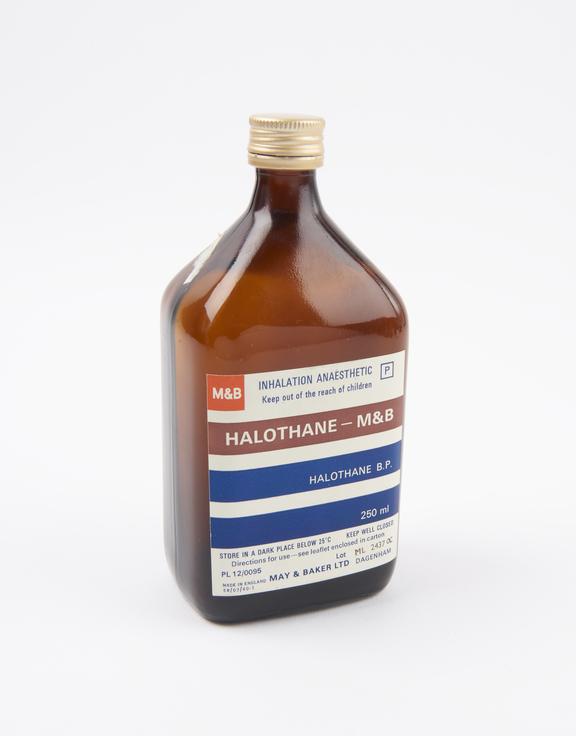
Empty halothane anaesthetic bottle
- maker:
- May and Baker Limited

Empty brown glass bottle for halothane anaesthetic bottle, by May and Baker Ltd., 1980
Halothane was introduced into Britain in 1956 as a result of a search for a safe, potent and nonexplosive anaesthetic. C W Suckling at Imperial Chemical Industries first made the anaesthetic in 1951. Despite early concerns and doubts, researchers and anaesthetists began doing trials with the new anaesthetic agent, often on themselves and then on larger groups of patients. The clinical trials convinced people of its safety and efficacy. As it was non-flammable, diathermy – the use of electrical heat to cut tissue and stop bleeding, could be used more widely. Recovery times after receiving the anaesthetic was much quicker with less nausea.
Halothane was designed to be inhaled and could be easily incorporated into the most popular anaesthetic machines of the time, based on a design by Henry Gaskin Boyle. With the start of the National Health Service in 1948, anaesthetists no longer had to buy their own anaesthetics and were therefore not restricted by cost. Since the 1980s, halothane has been replaced by newer anaesthetics in Europe and North America. It remains on the World health Organization’s List of Essential Medicines due to its relatively lower cost and continues to be used worldwide.
Details
- Category:
- Anaesthesiology
- Object Number:
- 1981-706
- Materials:
- glass
- type:
- anaesthetic bottles
- credit:
- Skinner, U.B.




